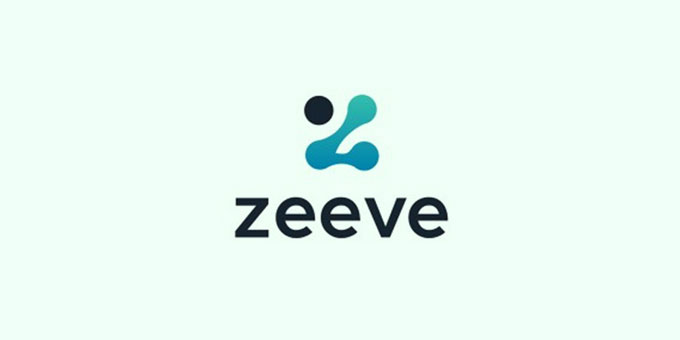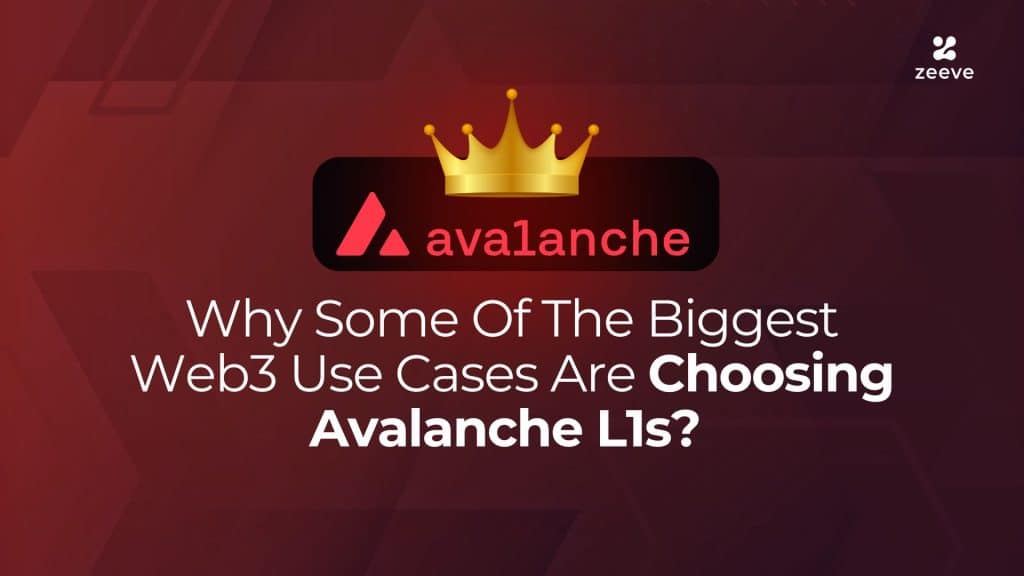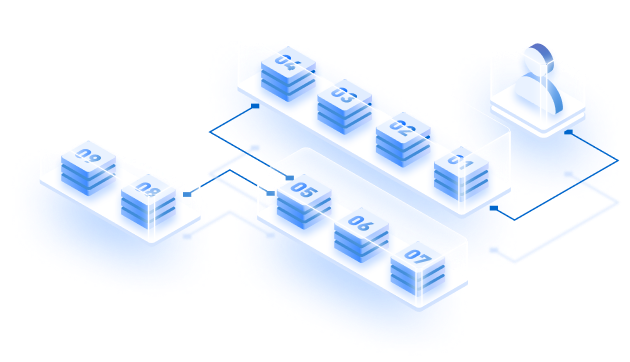Today, when most blockchains are built on a compromise between scalability, decentralization, and security, Avalanche L1s uses a highly interconnected subnet architecture to bypass the blockchain trilemma.
Each day, Avalanche and its sovereign L1s handle millions of transactions across diverse use cases at a speed and scale far above industry standards. It’s a hot favorite among Web3 games, RWA-savvy projects, and institutions. It has 175 blockchains operating in its ecosystem, yet it goes on smoothly without a hiccup, almost offering a Web2-like user experience in the most carbon-neutral way.
Avalanche is positioning itself as the internet of L1 chains. Avalanche L1 use cases
account for some of the biggest Web3 use cases. Note the names Gunzilla, Konami, Trader Joe, Aave V3, Stargate Finance, JP Morgan, Ticketmaster, and more.
This article digs into what makes Avalanche L1s the most popular choice among a range of Web3 projects and applications.
What excites me most about Avalanche? 🔥
— leocsm9000 🇧🇷 | 🇺🇸 | 🇵🇹🔺 (@leocsmavax) March 18, 2025
✅ Low supply and deflationary mechanism with fee burning
✅ Low fees and near-instant finality — transactions settle in under 2 seconds
✅ Security and innovation in a US-based blockchain
✅ The blockchain for the masses — scalable,… https://t.co/hfrfl5tYir pic.twitter.com/QUPdppAKNf
Sovereign Chains instead of Cookie-Cutter Infrastructure
Avalanche is a cluster of independent sovereign chains. Each sovereign chain is called an L1 (after the Avalanche 9000 upgrade) within the Avalanche ecosystem. These L1s are fully autonomous, customizable, and capable of defining their rules regarding tokenomics, transaction fees, type of consensus, number of nodes, etc. The L1s can issue their own gas tokens, optimize their gas fees, and define the validator rewards.
Also Read: Is Avalanche9000 really about 1000x cheaper L1 costs, or is there more?
Each subnet can also define its own Virtual Machine (VM). Avalanche is also backward compatible with all Ethereum dApps and dev tooling. After the Avalanche9000 upgrade, the cost of launching sovereign L1s on Avalanche dropped by 99.9%, while the C-chain fees saw a 96% decrease.

Why is this crucial for dApps building on Avalanche?
Each use case is built around specific capabilities. For instance, a Web3 game would need a fast, scalable chain that offers low-cost transactions. A DAO would prefer to control the governance to implement its rules better. On the other hand, an RWA tokenization platform would build on a chain with high interoperability, security, and privacy.
Avalanche $AVAX empowers developers to create tailored applications through horizontal scaling. Imagine it as a city of unique, sovereign houses instead of cookie-cutter apartments—each project can be customized to fit its needs. This flexibility sets Avalanche apart in Web3. pic.twitter.com/B5DHjTypQv
— Grayscale (@Grayscale) November 9, 2024
Avalanche allows you to build specialized L1s for every use case. Currently, 175 L1 chains are active within the Avalanche ecosystem, serving diverse Avalanche L1 use cases, including creator economy, gaming, institutional tokenization, lending and borrowing, healthcare, and more. You can even develop your own permissioned/public network, which is one of the main reasons Avalanche is often called the hot favourite of institutions.
Also Read: How Avalanche L1s are Winning Institutions For Custom Chains
Unlike Ethereum L2s or Polkadot’s parachains, the Avalanche L1s aren’t stuck with a template. They can experiment and go crazy with their offerings without having the primary chain pulling the strings.
How does Avalanche do this?
Avalanche’s fundamental architecture separates the application layer from the consensus layer. Being a general-purpose consensus engine, it doesn’t restrict the kinds of applications that can be built over it. You can build any kind of Avalanche L1 use case. The developers need to define a few parameters and can set up a specialized L1 for their dApp with minimal friction and infra overhead. Zeeve makes it easy to launch all of it at just a $50 testnet.

Developers don’t need to worry about how nodes come into agreement. They can also build over Exchange Chain (X-Chain), Platform Chain (P-Chain), and Contract Chain (C-Chain)–the three core chains supporting different Avalanche L1 use cases, or an existing L1. For instance, the Avalanche Foundation recommended Beam L1 as a base for many new game projects.
Massive TVL and Fluid Digital Identity
Despite being isolated and independent at the consensus layer, the Avalanche L1s can communicate at the application layer. This interconnectedness ensures high interoperability without the additional load across L1 chains within the Avalanche ecosystem.
The complex ecosystem of interconnected blockchains is capable of communicating seamlessly. Besides its subnet architecture, Avalanche Warp Messaging (AWM) and Teleporter allow seamless communication and asset transfers between L1s.
Since chains can talk with each other, users can benefit from fluid digital identities unified across all Avalanche L1s and connected apps.
For instance, Lamina1 built a high-performance chain to expand their creator ecosystem across music, film, fashion, art, and indie gaming, seamlessly onboarding metaverse creators. Lamina1 has a specialized subnet for each Premium Creator Feature, including Identity, Assets, and Storage. Each of these subnets is interoperable, allowing for fluid digital identities. An artist could use the earnings from one platform/chain to buy an NFT on another chain.
Holy shit, @Lamina1official is now nearly 30% of all traffic of all @avax L1's combined.
— VonDoom ☕️ (@CryptoVonDoom) March 14, 2025
GG, @rebeccabarkin & @nealstephenson. pic.twitter.com/p9KYkqHEKB
Rymedi deployed three subnets–Rymedi Identity Subnet, Rymedi Transaction Subnet, and Rymedi Compliance Subnet– each for three distinct Avalanche L1 use cases. These L1s can interoperate and communicate for high data integrity, network security, and regulatory compliance.
This holds for all L1s if every validator on the L1 is synced with the P-Chain of the Primary Network. There would be no need for bridges, multiple sign-ups, or wallet setups. Using a single identity, you can seamlessly move across apps and games supporting Avalanche L1 use cases. Picture the possibilities that Avalanche opens up in a metaverse-led future. Easy UX/UI and user-friendly interfaces have long been anticipated in dApps. Avalanche could be one of the first platforms to enable such fluid UX/UI experiences across dApps and L1 chains.
Interoperability is one of the main reasons Web3 games are flocking to Avalanche. Cross-chain interoperability also brings in high liquidity, shared TVL, and the opportunity to grow one’s user base several-fold.
Avalanche L1s are the base camp for fabulous games like Off The Grid, Eclipse, Beam, Konami, and DeFi Kingdoms (DFK). Off The Grid alone has 9 million wallets, and DeFi Kingdoms arrived straight from the Harmony blockchain. Any game building on Avalanche has the default advantage of a wide user base and new TVL. Users and liquidity can freely flow between chains. After DFK’s subnet launch, Synapse Bridge’s TVL more than doubled to a record $330M, accounting for 82.5% of the total bridging volume. DFK has transacted 750 transactions, and on average, 800M worth of gas is spent per day on its subnet.
Control Over Infrastructure
Avalanche L1s love that they can own everything from top to bottom. They can own value in ways never thought of before. Gaming Studios, especially, want to own a blockchain rather than build on a blockchain.
When games are built on sovereign chains, they aren’t sharing their infrastructure with unrelated games and have complete control over the infrastructure and user experience. The same holds true for institutions dealing in tokenized assets. If Fidelity can choose who validates their transactions and keep data private for regulatory and security reasons, why won’t they consider Avalanche for building their tokenized funds?
Dexalot, a DEX on Avalanche, solved two major challenges this way. Dexalot can support 1 million transactions on a slow day and up to 2 million on a busy day. Being a transaction-heavy dApp, Dexalot was able to control its gas fees through its own Avalanche L1 setup, and early interchain protocols (like ICM) enable multi-chain communication for token swaps.
When millions of players share blockchain space with unrelated projects, it’s not just inefficient and fragmented, it also kills the opportunity for players or users to own a stake in their favorite game. Avalanche L1 use cases are changing that.
Avalanche allows permissionless validation and delegation for its L1s. This means anyone who meets the eligibility criteria can run or delegate a node to secure the subnet they are part of. Gaming Studios are not only interested in the infrastructure powering their game but also contribute towards the security of blockchain.
The Etna upgrade made it possible for Avalanche L1s like Beam to allow participants to secure the network without running a node themselves. After the Horizon Upgrade, the Avalanche Foundation would be handling a number of Beam validator nodes as the key ecosystem contributor.
Similarly, PLAYA3ULL Games is engaging in node sales as part of its fundraising initiatives. Already, 4,400 out of 50,000 nodes have been sold. The node operators can earn a reward of 1.500 3ULL coins daily.
In Web2, games have their own servers. In Web3, games will have their own chains with interchain communication via Avalanche L1 use cases.
Zero Competition For Blockspace
Avalanche L1 chains enjoy a striking advantage over other appchains. They do not have to fight for blockspace. Each L1 remains isolated from the rest of the L1s, and the primary network has its own dedicated set of validators. These Avalanche L1 use cases put no additional load on the primary network and are capable of processing transactions faster than Avalanche’s primary shared chains, like the C-chain.
Avalanche has processed billions of transactions with zero downtime. That’s because L1s don’t share their consensus and validation with the Primary Network. Transactions become final and immutable within seconds, as they don’t have to be verified again on the mainnet. L1s serving different Avalanche L1 use cases execute millions of transactions without impacting the speed of the primary network.
This horizontal scaling ensures infinite scalability for the Avalanche network as a whole. One of the major reasons Avalanche is becoming the epicenter of Web3 gaming. Its gaming subnets are building facilities for easy deployment of games, making it a destination for gamers and developers.
Institutional Avalanche L1 use cases can also be facilitated via atomic settlement for high-value transactions, ensuring cost and speed efficiency in private markets.
Why are major financial institutions looking to Avalanche's Subnet architecture to test how blockchains and tokenization could revolutionize capital markets?
— Avalanche🔺 (@avax) April 26, 2024
Ada Kokoshi, Digital Assets Director @The_DTCC, explains one key advantage that her team saw as a major benefit to using… pic.twitter.com/PA3HSkuUYY
Developer Tooling and Direct Support From Avalanche
Developing games doesn’t just concern technology; it also involves publisher-level support and services. Avalanche offers top-level support, helping games build their L1, promote their Avalanche L1 use cases, raise funds, gather a community, and represent themselves at events.
The Avalanche ecosystem offers simple and intuitive developer tools of all kinds to builders and developers to help teams launch custom L1s with minimal friction. Faraway leveraged the support from Avalanche to launch its own custom L1, FCHAIN, to support gaming ecosystems. Avalanche isn’t just provided infrastructure; it acts as a partner for the chains and apps.
Shatterline, developed by @farawaygg, is building its own Layer 1 blockchain on Avalanche called FCHAIN.
— JYP (@jyp_nft) December 13, 2024
Why choose FCHAIN and create a Layer 1 blockchain?
AVAX’s simple tooling and developer-friendly environment make it easy for studios like Faraway to build immersive games.… pic.twitter.com/REuWWBh32v
LAMINA1 Co-Founder & CEO Rebecca Barkin says, “With our expertise in consumer design and content development, and their commitment to scale, speed, reliability at the Consensus layer, we’re aiming for great acceleration. Together, we can empower creators to lay down the stepping stones to an interconnected and open metaverse.”
Similarly, for Avalanche L1 use cases concerning tokenization, Avalanche has integrations from Chainlink oracles and Axelar interop, and features such as off-chain asset registration, verification, and tokenization. Jiritsu L1 is being used to verify FTI US products, Bitcoin ETF (EZBC), and the Franklin OnChain US Government Money Fund (FOBXX). Jiritsu uses Zero-Knowledge (ZK) Proofs and Multi-Party Computation (MPC) to ensure secure and private verification of asset details, regulatory compliance, and asset integrity in digital tokens.
The Avalanche Foundation and ecosystem partners provide funding support to help L1 projects build and scale. Avalanche’s Retro9000 is one of the most recent active initiatives.
Avalanche has infrastructural capabilities that can start the next wave of Web3 adoption in real-world scenarios. While Avalanche is still focused largely on gaming and RWAs, its growth-focused upgrades and cult-like community would be tough to match by existing L1 blockchains. Avalanche is going to be the internet of blockchains. We know the how, we anticipate the when soon!
Launch Your Own Avalanche L1 With Zeeve
Avalanche L1 use cases can cater to the Web 2.5 revolution before Web3 adoption even kicks in. IF Avalanche’s capabilities intrigue you to build your custom L1 supporting any of the brilliant Avalanche L1 use cases, we have got you covered.
Cognitus is an enterprise-grade platform powered by Zeeve. It provides all the support and tooling needed to build, launch, and scale your Avalanche L1 from scratch. Interested to know more? Get in touch with our experts to resolve all your queries about launching your own Avalanche L1.
Schedule a call today. Build and deploy your Avalanche L1 on Cogitus with plug-and-play dev tools powered by Zeeve.






















